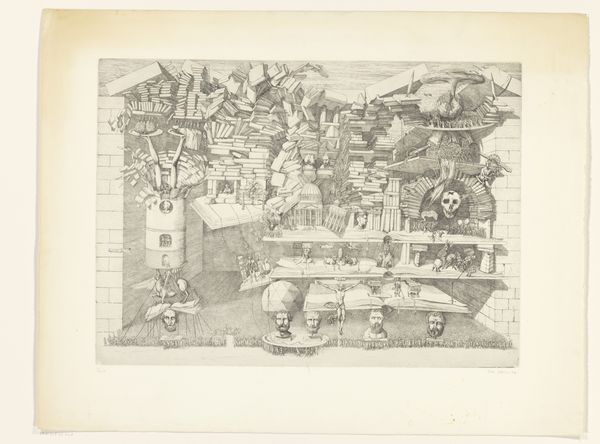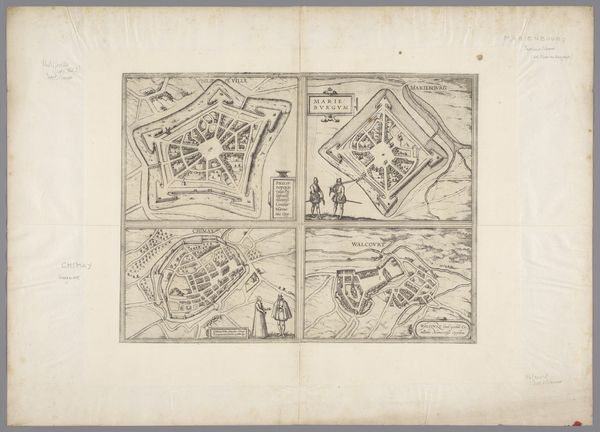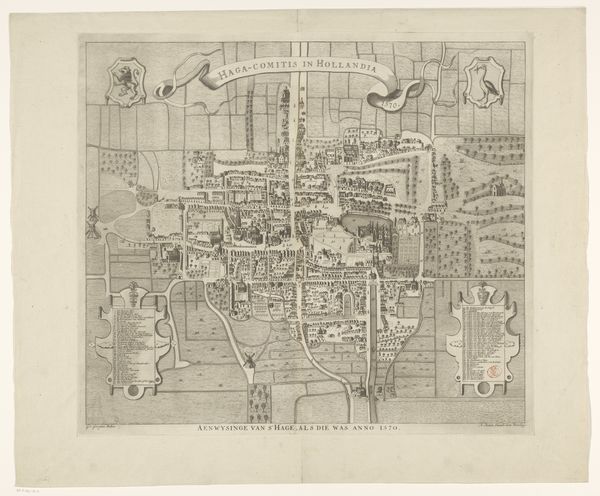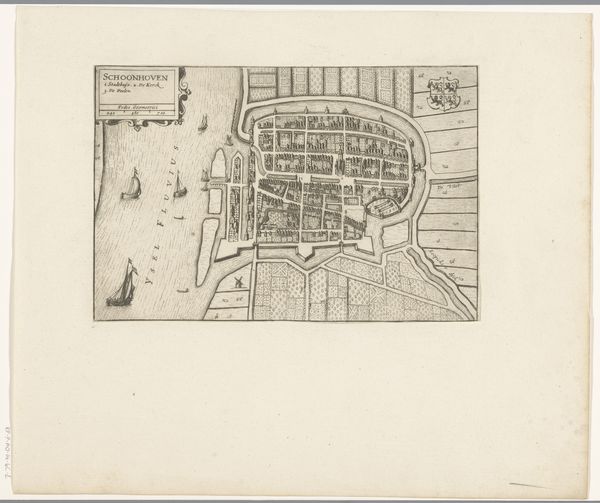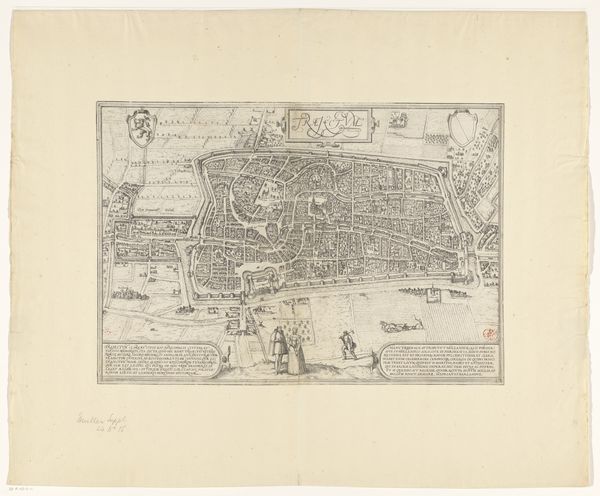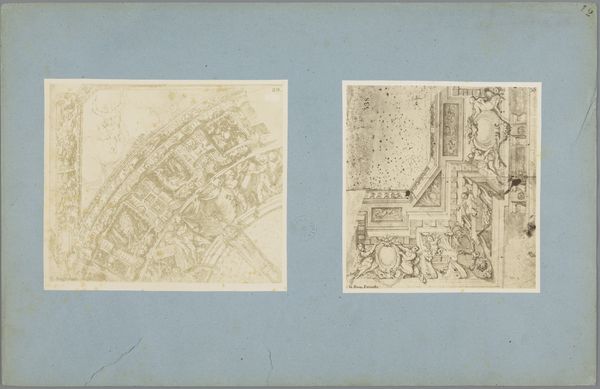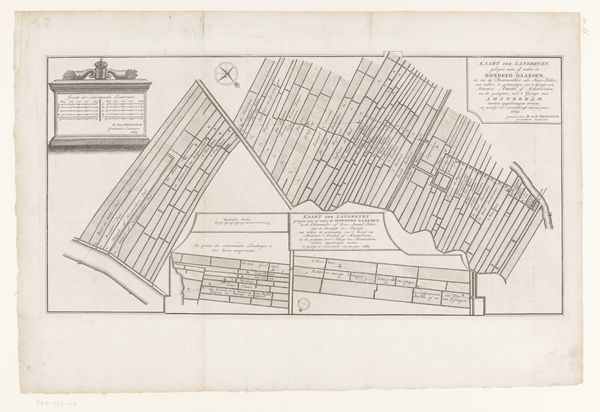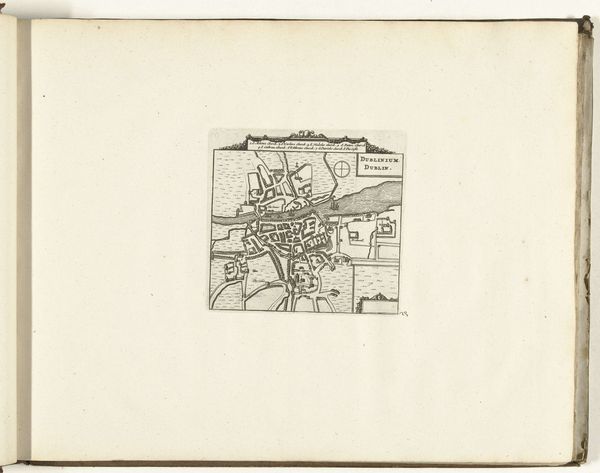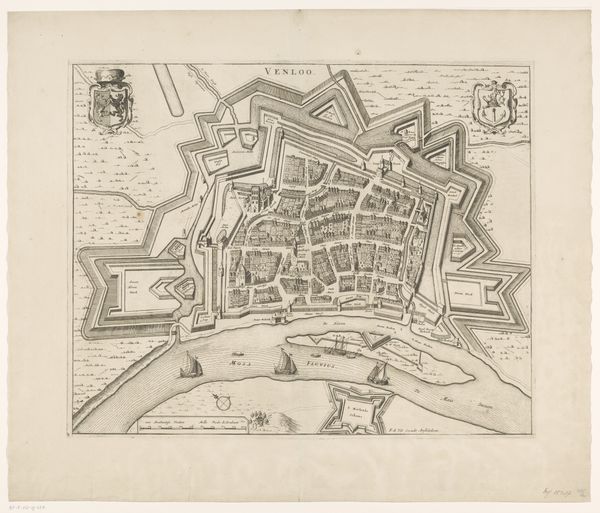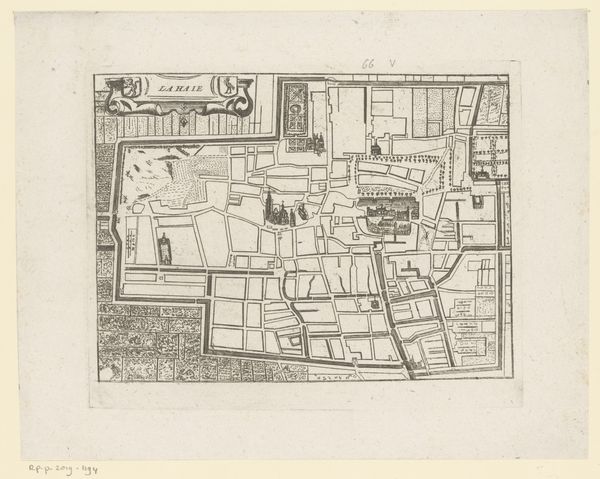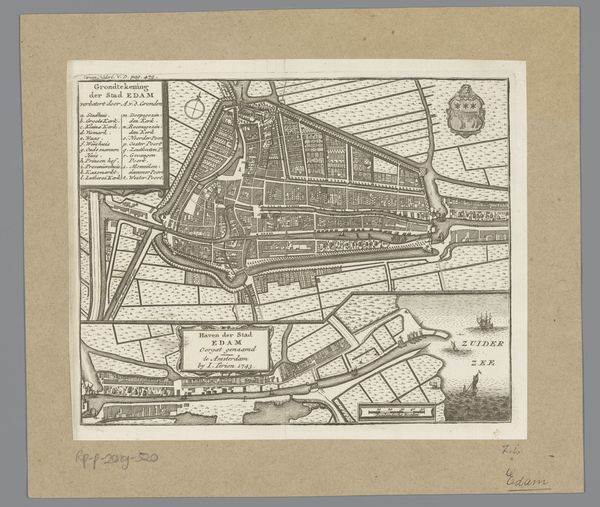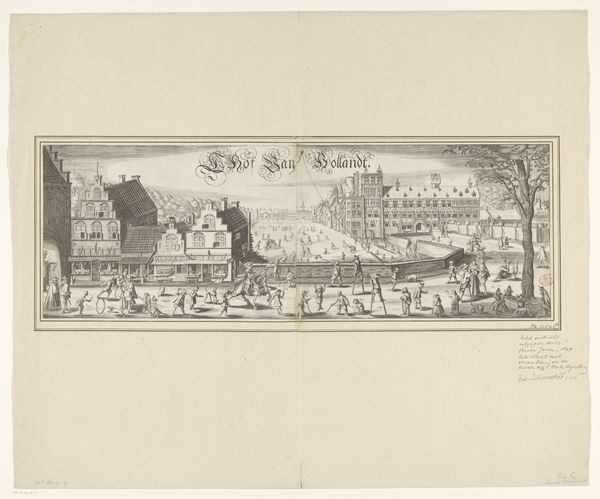
print, engraving
#
medieval
# print
#
old engraving style
#
geometric
#
history-painting
#
academic-art
#
engraving
Dimensions: height 252 mm, width 346 mm
Copyright: Rijks Museum: Open Domain
Curator: Let's turn our attention to "Conclaaf na het overlijden van Leo XI," or "Conclave after the death of Leo XI," a print dating from 1605-1607, now residing here at the Rijksmuseum. Editor: Wow, what an elaborate floor plan. It reminds me of some surreal, bureaucratic dollhouse. Tiny people enacting very serious business. Is this, like, their strategy map? Curator: Precisely. It offers us insight into the papal conclave following the death of Pope Leo XI. Beyond its aesthetic qualities, it represents a detailed record of the event's physical space and ceremonial aspects. Conclaves are inherently fascinating historical moments, tinged with drama and power plays, all hidden behind closed doors. Editor: Absolutely, it’s like looking at a pressure cooker diagram. The detail is impressive. All these little rooms for the cardinals look so temporary, almost flimsy. It feels like they're trying to map out the intangible, the power dynamics themselves. And I see they have diagrams illustrating some event vignettes... the tiny soldiers are an amusing touch. Curator: Consider how prints like these served to inform the public, granting a glimpse into an otherwise secret process. These architectural depictions gave people access to understand how a new pope came to power, with some level of detail, shaping public perception of the papacy itself. Editor: The attempt to map the unmappable always tickles me, like trying to chart love or inspiration. Still, as much as it is an objective rendering of place, I suspect it offered those outside the event to craft their own ideas about it, or feel somewhat more involved. What are those spiraling scrolls jutting into the diagram? Curator: These are the rolled up descriptions of some events and occurrences, meant to be integrated with their respective spots in the central 'floor plan'. You can almost hear whispers and see plots unfold just by looking at the geometrical arrangement. Editor: It really pulls you into this tiny, intense world, a place where the mundane collides with the sacred. All of the symbolic visual encoding creates an atmosphere both of record and prophecy. It’s wonderful. Curator: Indeed. This print bridges art and historical document, providing us a window into the complexities of faith, power, and representation in the early modern era. It serves as a fascinating insight into history. Editor: Agreed. Beyond the historical data, I am charmed by its strangeness, this miniature, geometric stage setting for history and human ambition, isn't something you easily forget.
Comments
No comments
Be the first to comment and join the conversation on the ultimate creative platform.
